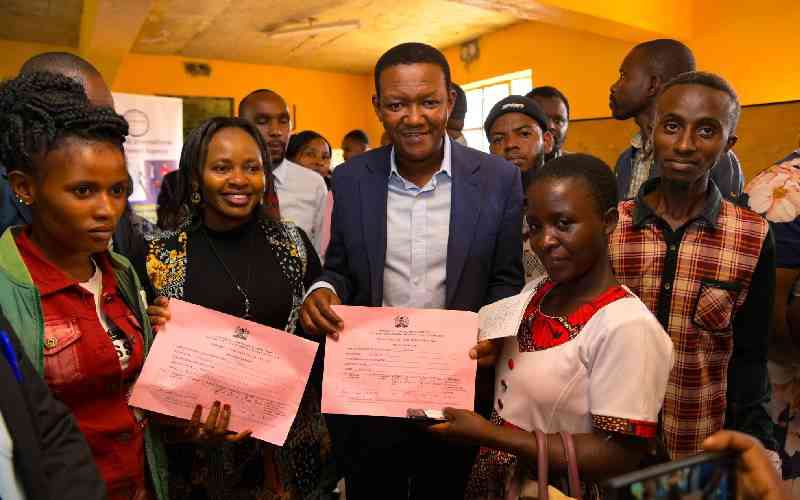While on a recent trip in Kitui, I came face to face with the incredible gains of a devolved system of governance. Thanks to devolution, there has been increased development of feeder roads in deeply rural parts of Kitui.
As a result, farmers can now bypass middlemen and transport grains like pigeon peas to market centres that fetch them better prices.
As Kenya’s third most important legume behind beans and cowpeas, pigeon peas have immense potential to bolster the earnings of Kitui’s smallholder farmers. Bad road networks had previously undermined that potential.
Kenya is the world’s fourth-largest producer of pigeon peas and the second-largest in Africa behind Malawi. The bulk of Kenya’s pigeon peas is cultivated by smallholder farmers like the ones in Ukambani region. They can now begin to reap the benefits of better roads translating to better earnings.
Turkana pastoralists and farmers can also follow in the footsteps of those pigeon peas farmers. Turkana is Kenya’s largest county with an approximate size of 71,600 square kilometres, which makes it almost three times the size of Rwanda. This sheer land size has, however, not translated to prosperity for the county’s 927,000 residents.
Since the beginning of devolution seven years ago, Turkana has received from the national government an average of Sh28,384 per person based on poverty parameter, making it the county with the highest allocation. Despite this, Turkana still ranks as the poorest county in Kenya, with 79 per cent of its population living below the poverty line. We should establish why poverty continues to run amok despite the billions of shillings pumped there. The national government has disbursed nearly Sh1.7 trillion to county governments based on poverty parameters since devolution began in 2013. This cash is utilised differently by the 47 counties, depending on their priority needs. Some, like Turkana, have overwhelming development needs, while others, like Kakamega, have prevailing service needs. While Turkana needs comparatively more roads than Kakamega, the highly populous western Kenya county needs more medicine and agricultural extension officers. There is a clear demarcation between any county’s development needs and service delivery needs.
Devolution dividends
Meeting these needs determines whether the devolution dividend will be shared in a way that truly benefits all Kenyans, irrespective of whichever corner of the country they reside in. The Equalisation Fund of 0.5 per cent of revenue was established by the 2010 Constitution to address historical marginalisation and unequal development across Kenya. Parliament should move with speed to unlock the current impasse and operationalise the fund. Counties should, however, remain on their mettle and focused in addressing poverty. Poverty is no respecter of county borders. In this regard, Turkana and Kakamega have a pressing common enemy – poverty. Despite being one of the top five recipients of devolution funds, Kakamega has the second-highest number of poor people. At least 580,834 people in the county are living below the poverty line. These people have not been yanked out of poverty despite the Sh8,952 per person that Kakamega has received from the national government. Why? In the same vein, to what extent has Kwale County addressed the poverty of its people through the Sh21,726 per person that it has received, or even Kitui County with the Sh11,640 per person received strictly based on the poverty parameters?
Each of the 47 counties should answer this question. They can only do so through credible data as provided by the Kenya National Bureau of Statistics.
Considering that data is dynamic and that it keeps changing, revenue sharing among counties should not be set in stone. If Turkana claws its way out of extreme poverty in a few years’ time, its future revenue share should not be pegged on its current extreme poverty status. In the final analysis, we should remember that we are one Kenya. Extreme poverty in Turkana makes Kenya economically weaker, which affects richer counties like Kiambu. It is, therefore, in Kiambu’s best interest to ensure Turkana rises economically. Currently, Turkana contributes only 1.1 per cent to Kenya’s GDP. If devolution helps it to contribute substantially more, Kenya will benefit.
But even more outstandingly, I suggest that instead of focusing so much on the distribution of the Sh316 billion to counties, we should focus more and be vigilant on the equitable distribution of the gains in the Sh2.73 trillion budget held at the national government. We will either rise together as a nation or sink together if we do not think and act green!
–The writer is founder and chairperson, Green Africa Foundation. www.isaackalua.co.ke
 The Standard Group Plc is a
multi-media organization with investments in media platforms spanning newspaper
print operations, television, radio broadcasting, digital and online services. The
Standard Group is recognized as a leading multi-media house in Kenya with a key
influence in matters of national and international interest.
The Standard Group Plc is a
multi-media organization with investments in media platforms spanning newspaper
print operations, television, radio broadcasting, digital and online services. The
Standard Group is recognized as a leading multi-media house in Kenya with a key
influence in matters of national and international interest.
 The Standard Group Plc is a
multi-media organization with investments in media platforms spanning newspaper
print operations, television, radio broadcasting, digital and online services. The
Standard Group is recognized as a leading multi-media house in Kenya with a key
influence in matters of national and international interest.
The Standard Group Plc is a
multi-media organization with investments in media platforms spanning newspaper
print operations, television, radio broadcasting, digital and online services. The
Standard Group is recognized as a leading multi-media house in Kenya with a key
influence in matters of national and international interest.






